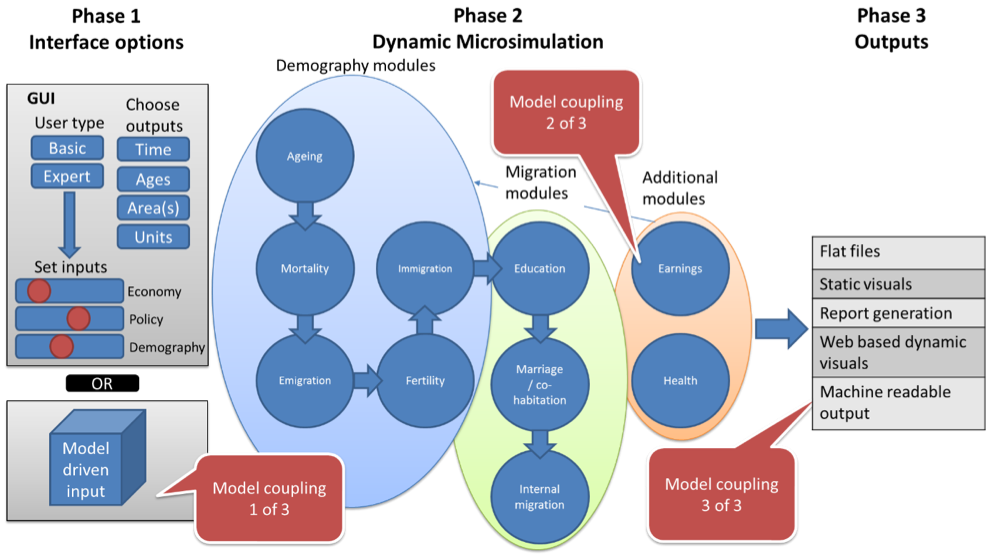I am very pleased to have been awarded a fellowship by the Alan Turing Institute, the UK’s national institute for data science and artificial intelligence. Here is a link to my profile on the Turing web pages which provides a bit more information about the kinds of things I will be doing.
SPENSER
One of my main Projects is developing SPENSER, a Synthetic Population Estimation and Scenario Projection model which uses dynamic microsimulation. It provides the framework for estimates of population which are dynamic and high resolution (at household level); and a comprehensive set of tools for user customisable scenario projections. The interactive interface allows users to set assumptions for the future (e.g. around economic, policy, health changes) which are translated to underlying demographic constraints (mortality, fertility, migration). The model runs the projection in line with the chosen scenario parameters, providing a principal projection along with confidence intervals. Development of SPENSER is threefold: (1) design of a user-friendly interface for the model; (2) implementation of a dynamic microsimulation model which translates user input and underlying data in to a scenario projection; and (3) experimentation with innovative visualisation of results, to include interactive maps and plots. The Figure 1 provides an overview of how these three phases fit together.

The Turing project is concerned with phase 2 of the programme, the design and implementation of the dynamic microsimulation model. Within this phase, this Turing project will also explore novel techniques to specify simulation parameters. For example, using machine learning to train the simulation parameters to historical data, drawing from commercial datasets. Figure 1 outlines three points for model coupling. These are access points where SPENSER can be run by an external computer model (1 of 3), for example a transport model which needs a human population input for a specific area; where extra modules can be added (2 of 3) for example adding population attributes such as earnings or health; and where machine readable output can be accessed (3 of 3) for example the transport model extracting demand results. These access points are included because this model is intended to be scalable at the end of this Turing project. The SPENSER model will provide a robust framework for testing a wide range of social-science scenarios and their impact on population change.
Rationale
Estimating and projecting populations for small areas requires careful model development and is computationally intensive. As we add scenarios, based on assumptions about variables which could change in the future, (e.g. economic, political, health or educational attainment) the challenge increases substantially. These scenarios are very important for the utility of population projections, as they allow users to test a range of possible future scenarios and the impact that they have on the phenomenon of interest, including but not limited to infrastructure delivery. Providing quantification of the uncertainty surrounding projections helps planners to make informed decisions. Researchers usually rely on existing projections (e.g. those produced by National Statistical Agencies), which provide no scope for customisation and are generally not of high enough resolution for many applications. SPENSER will make demographic forecasting accessible to a wide range of stakeholders while the model interface will allow SPENSER to be called by other models being developed both within and outside of the Turing Institute.